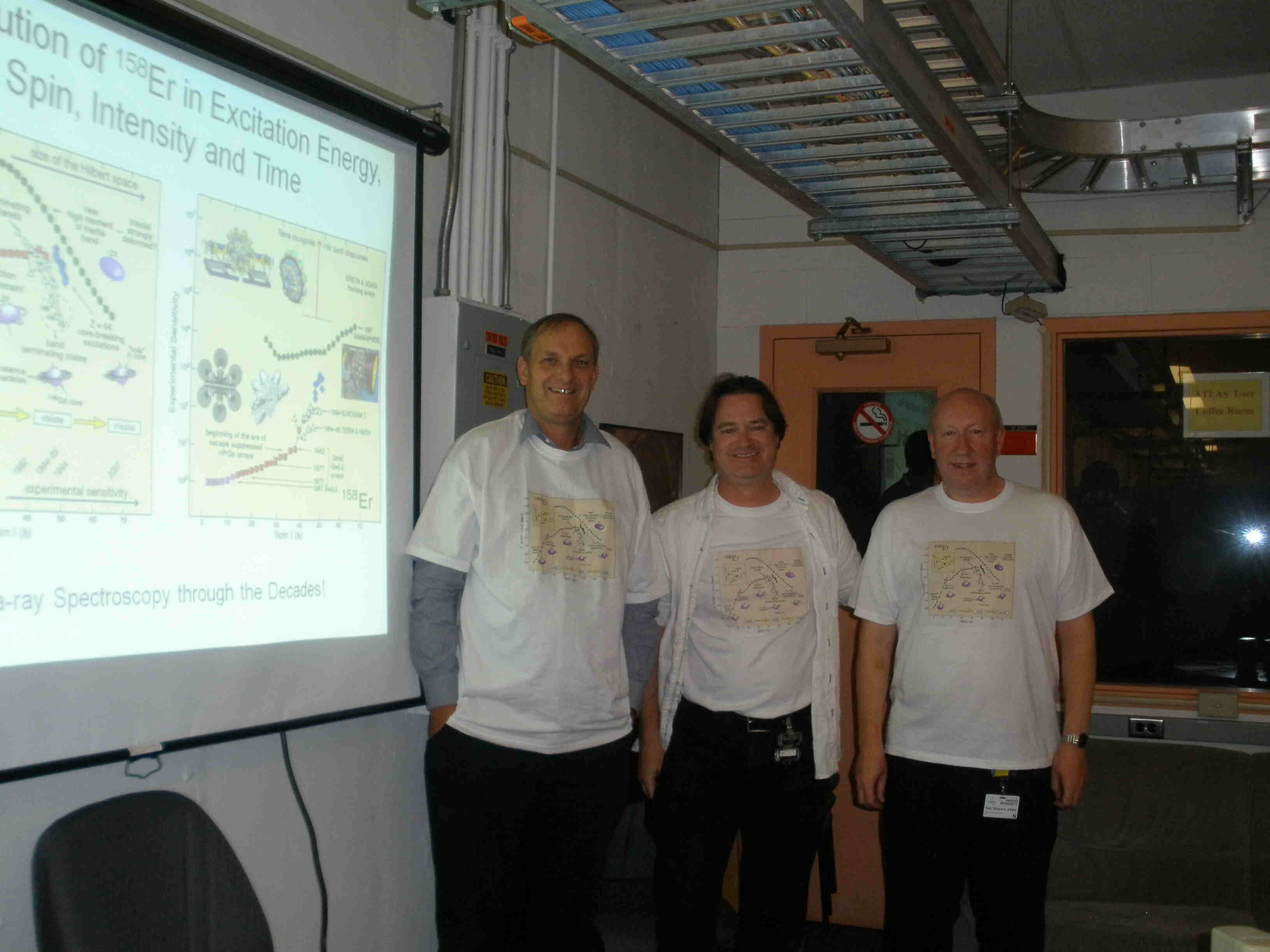Comprehensive study of erbium-158 published.

The rare-earth nucleus 158Er, with 68 protons and 90 neutrons, is a textbook example of a deformed (non-spherical) rotational nucleus. It has been studied over several decades by the Nuclear Physics Cluster, and has provided an insight into how angular momentum is generated in the atomic nucleus. It has also generated numerous Liverpool PhD theses, including those of the principal authors John Simpson and Mark Riley, both ex Liverpool students who worked with John Sharpey-Schafer and Peter Butler.
With ever increasing sensitivity of growing detector systems – multidetector gamma-ray spectrometers – it has been possible to access higher and higher discrete angular momentum states in nuclei. Phenomena such as backbending, band termination, and shape coexistence have been studied. As a nucleus rotates ever faster, fictive Coriolis and centrifugal forces start to break apart individual paired (angular momentum zero) nucleons and align their single-particle angular momenta with the total nuclear spin. A fraction of the total nuclear angular momentum now comes from these broken pairs, rather than simple collective rotation. Ultimately, the nucleus arrives at a state at 46ħ in which all the angular momentum is generated by the 6 broken valence pairs outside a spherical doubly magic core of 146Gd. The nucleus can no longer rotate in this state and is similar in structure to Saturn and its equatorial rings.
The latest increase in sensitivity allowed us to push up to discrete energy levels with angular momentum quantum numbers I > 65ħ, the so-called ultrahigh-spin regime. The nucleus achieves this by promoting further valence nucleons from the spherical core. Although this is energetically expensive, the magic core is broken and can now adopt a deformed triaxial shape with a large moment of inertia – similar to stable Jacobi shapes of classical rapidly rotating self-gravitating macroscopic objects, such as asteroids. The 158Er nucleus is predicted to be able to accommodate an angular momentum approaching 100ħ before centrifugal forces finally rip it apart. Exploring this extreme region of nuclear angular momentum may be feasible when the next generation of 4π gamma-ray spectrometers, such as AGATA (EU) or GRETA (US), come online.
The evolution of 158Er with angular momentum is shown in the Figure and the results, including several hundred discrete nuclear energy levels and gamma-ray transitions, have been published in Phys. Rev. C 107, 054305 (2023).
